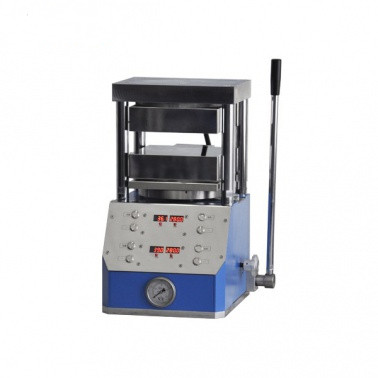Rejoindre TMAX, devenir agent!
Rejoindre TMAX, devenir agent!
Laminating Hot Press
A laminating hot press is a critical piece of equipment in the production of batteries, especially for laminating electrode and separator materials. It uses heat and pressure to bind multiple layers together, ensuring proper adhesion and improving the mechanical integrity of the final product. Here’s a detailed explanation of the laminating hot press, its working principle, and its applications in battery manufacturing:
Overview of Laminating Hot Press
Purpose
Primary Function: To laminate electrode layers (anode and cathode) with separator materials.
Application: Commonly used in the manufacturing of pouch cells, prismatic cells, and other multilayered battery configurations.
Components
Heating Plates: Provide controlled heat to activate adhesives or binders.
Pressure Mechanism: Applies uniform pressure across the layers being laminated.
Control System: Manages temperature, pressure, and duration of the lamination process.
Cooling System: Often integrated to rapidly cool down the laminated stack after pressing.
Working Principle
Steps Involved
Preparation:
Stacking: Layers of electrodes and separators are precisely aligned and stacked.
Pre-Heating: The stack may be pre-heated to ensure even temperature distribution.
Laminating:
Loading: The stacked materials are placed between the heating plates of the laboratory hydraulic hot press.
Heating: The plates heat the materials to a predefined temperature, activating any adhesives or binders present.
Pressing: Simultaneously, uniform pressure is applied to ensure that the layers bond together effectively. This pressure ensures that there are no air pockets or misalignments.
Cooling:
Controlled Cooling: After the desired lamination is achieved, the stack may be cooled while still under pressure to solidify the bonds.
Unloading:
Finished Product: The laminated stack is removed from the press and subjected to further processing or quality checks.
Key Parameters
Temperature: Typically ranges from 60°C to 150°C, depending on the materials and adhesives used.
Pressure: Ranges from a few MPa to tens of MPa, depending on the specific application and materials.
Time: The duration of heating and pressing, which can range from a few seconds to several minutes.
Applications in Battery Manufacturing
Pouch Cells
Lamination of Electrodes and Separators: Ensures tight and uniform bonding between layers, which is critical for maintaining cell integrity and performance.
Formation of Multilayer Structures: Helps in creating multi-layered electrode stacks that are common in high-capacity cells.
Prismatic Cells
Layer Bonding: Used in the initial stages to bond large sheets of electrodes and separators before they are cut and stacked.
Cell Structuring: Assists in maintaining the structural integrity of cells during assembly.
Advantages
Uniform Adhesion: Ensures consistent bonding across the entire surface area, which is crucial for the performance and safety of the battery.
Increased Mechanical Strength: Enhances the durability and mechanical integrity of the cell structure.
Scalability: Suitable for both small-scale pilot production and large-scale manufacturing.
Precision Control: Allows for precise control over temperature, pressure, and timing, leading to high-quality laminates.
Considerations
Material Compatibility: The materials used (electrodes, separators, adhesives) must be compatible with the temperature and pressure settings of the laminating hot press.
Process Optimization: Requires careful optimization of parameters to avoid issues such as delamination, uneven bonding, or thermal damage to materials.
Maintenance: Regular maintenance of the press is necessary to ensure consistent performance and longevity.
Conclusion
The laminating hot press is an essential piece of equipment in battery manufacturing, especially for creating laminated structures with uniform adhesion and enhanced mechanical properties. Its precise control over heat and pressure makes it suitable for producing high-quality battery cells, particularly in the context of pouch and prismatic cells. Proper setup, optimization, and maintenance of the laminating hot press are critical for achieving the desired outcomes in the battery production process.

Précédent :
Hydraulic Press Square MoldSuivant :
Electric Hydraulic Pressdernier blog
Balises
© Droit d\'auteur: 2025 Xiamen Tmax Battery Equipments Limited Tous droits réservés.

IPv6 réseau pris en charge